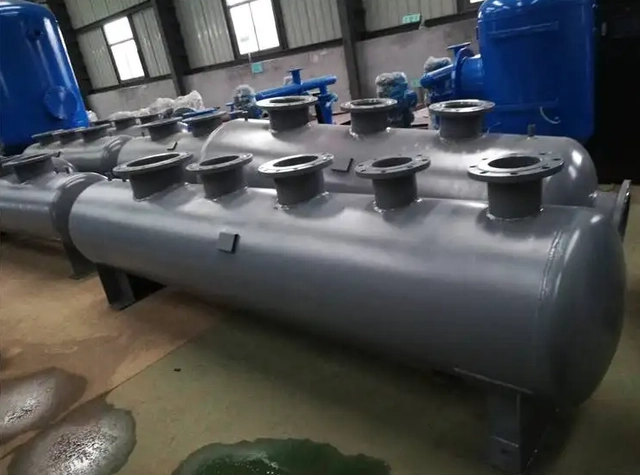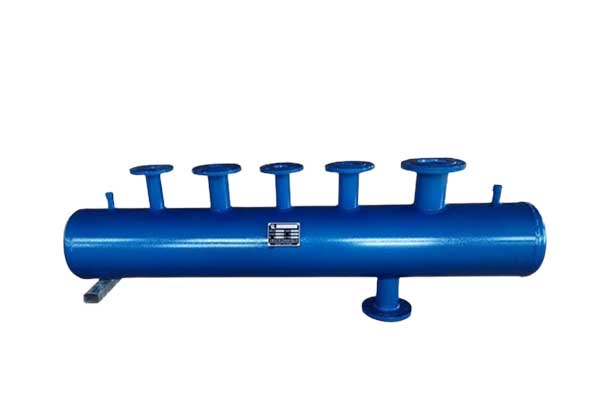The steam header is a major auxiliary equipment of a steam boiler, used to distribute the steam generated during the operation of the boiler to each pipeline. It is a mechanical device that bears pressure and is a high-pressure vessel. The main function of the steam header is to distribute steam, and therefore several high-pressure gate valves are installed on the steam header to connect the main steam valve of the steam boiler and the steam distribution gate valve, so as to distribute the steam in the steam header to the necessary places. The main pressure components of the steam header include steam distribution valve seat, main steam valve seat, safety valve seat, relief valve seat, pressure gauge valve seat, and thermometer valve seat. The head, shell, and flange materials are Q235-A/B, 20g, and 16MnR, with a specification of φ159-φ1500, a working pressure of 1-2.5MPa, a working temperature of 0-400℃, and the working medium is steam, hot and cold water, and compressed air.
Functions:
-
It stores steam and regulates pressure.
-
It distributes steam to various devices by balancing the pressure and distributing it to multiple branches.
-
The diameter of the steam header is larger than the pipelines, which slows down the flow of the medium and causes sedimentation.
-
The steam header acts as a storage tank for steam, similar to the air tank in a compressor, and the larger the diameter and volume, the better its pressure regulation and balancing effect.
Application:
The steam header, also known as steam distribution header, is an essential auxiliary equipment for steam boilers and is widely used in industries such as petrochemicals, power generation, steel, cement, and construction.
Working Principle:
The mechanical separation device generally uses multiple principles in combination, including:
-
Gravity separation: separation and classification based on the movement of objects in water and air media according to the law of gravity. This process is roughly divided into two stages: gravity settling and gravity classification, and is used in waste treatment and recovery.
-
Inertial separation: separation using the inertial force generated when the steam-water mixture changes direction.
-
Centrifugal separation: separation using the centrifugal force generated when the steam-water mixture rotates.
-
Water film separation: separation using the water droplets in the steam-water mixture adhering to the metal wall and flowing down.
The steam-water separation process in the steam drum generally has two stages: the first stage is rough separation, which separates a large amount of water from the steam and eliminates the kinetic energy of the steam-water mixture; the second stage is fine separation, which reduces the humidity of the steam.







